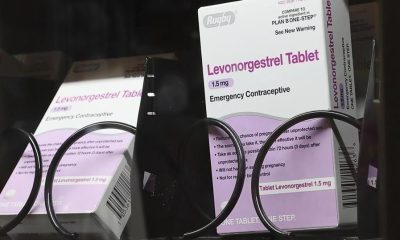@charset “UTF-8”;
/* MODULE : GUIDE */
#g-inlineguide-headline
font-family: “nyt-franklin”, arial, helvetica, sans-serif;
font-size: 13px;
font-weight: 700;
line-height: 20px;
max-width: 600px;
padding: 0;
@media (min-width: 740px)
#g-inlineguide-headline
font-size: 16px;
.g-inlineguide-list-circle li
position: relative;
padding-left: 1.75em;
@media (min-width: 740px)
.g-inlineguide-list-circle p,
.g-inlineguide-list-circle div,
.g-inlineguide-list-circle li
padding-left: 0;
.g-inlineguide-list-circle li:before
position: absolute;
content: “•”;
top: 2px;
left: 1em;
font-size: 15px;
line-height: 24px;
@media (min-width: 600px)
.g-inlineguide-list-circle li:before
top: 3px;
left: -1em;
.g-inlineguide
background-color: #f3f3f3;
text-align: left;
margin: 30px auto;
height: 380px;
width: calc(100% – 40px);
border-radius: 10px;
transition: height 0.5s;
@media (min-width: 740px)
.g-inlineguide
max-width: 600px;
#truncate-content
transition: height 0.5s;
height: 300px;
.g-inlineguide-container
margin: 0 20px 0px 20px;
padding: 20px 0 7px 0;
@media (min-width: 740px)
.g-inlineguide-container
margin: 0 35px 0px 35px;
.g-inlineguide-container-wrapper
height: 100%;
.g-inlineguide-bottom
display: -ms-flexbox;
display: flex;
-ms-flex-align: center;
align-items: center;
-ms-flex-line-pack: center;
align-content: center;
-ms-flex-pack: center;
justify-content: center;
top: 10px;
.g-inlineguide-content
position: relative;
height: 300px;
max-width: 520px;
overflow: hidden;
.g-inlineguide-logo
margin: 0 0 10px 0;
.g-inlineguide-date
font-family: “nyt-franklin”, arial, helvetica, sans-serif;
font-size: 13px;
font-weight: 500;
line-height: 25px;
color: #666666;
max-width: 600px;
margin: 5px auto 15px;
/* LINKS */
#g-inlineguide-id a
text-decoration: none;
.g-inlineguide a
color: #326891;
text-decoration: none;
border-bottom: 2px solid #CCD9E3;
.g-inlineguide a:visited
color: #333;
text-decoration: none;
border-bottom: 2px solid #ddd;
.g-inlineguide a:hover
border-bottom: none;
.g-inlineguide #g-inlineguide-headline a
color: #333;
text-decoration: none;
border-bottom: 0px solid #ddd;
.g-inlineguide #g-inlineguide-headline a:hover
border-bottom: 2px solid #ddd;
/* LIST */
.g-inlineguide-list-header
font-family: nyt-cheltenham, georgia, “times new roman”, times, serif;
font-weight: 500;
font-size: 26px;
line-height: 30px;
margin-top: 5px;
margin-bottom: 5px;
@media (min-width: 740px)
.g-inlineguide-list-header
font-size: 30px;
line-height: 36px;
margin-bottom: 10px;
margin-top: 10px;
.g-inlineguide-item-list
font-size: 15px;
line-height: 20px;
font-family: “nyt-franklin”, arial, helvetica, sans-serif;
font-weight: 500;
#g-inlineguide-item-list li
padding-left: 15px;
line-height: 20px;
margin-bottom: 10px;
@media (min-width: 740px)
#g-inlineguide-item-list li
font-size: 17px;
line-height: 24px;
margin-bottom: 15px;
#g-inlineguide-item-list li strong,
#g-inlineguide-item-list li h4
font-weight: 700;
#g-inlineguide-item-list li:before
color: #333333;
margin-left: -15px;
margin-right: 10px;
top: 0;
font-size: 16px;
@media (min-width: 740px)
#g-inlineguide-item-list li:before
left: 1em;
ul.g-inlineguide-list
max-width: 600px;
margin: auto;
.g-inlineguide-line-truncated
background-image: linear-gradient(180deg, transparent, #f3f3f3);
background-image: -webkit-linear-gradient(270deg, rgba(255, 255, 255, 0), #f3f3f3);
height: 50px;
border-bottom: 0.5px solid #dcddda;
width: calc(90% – 70px);
margin-top: -55px;
position: absolute;
@media (min-width: 740px)
.g-inlineguide-line-truncated
max-width: 520px;
width: 90%;
.g-inlineguide-truncate-button
display: -ms-flexbox;
display: flex;
-ms-flex-align: center;
align-items: center;
-ms-flex-line-pack: center;
align-content: center;
-ms-flex-pack: center;
justify-content: center;
margin: 10px 0 0 28px;
.g-inlineguide-truncate-button-text
font-family: “nyt-franklin”, arial, helvetica, sans-serif;
margin-top: 9px;
font-size: 13px;
font-weight: 650;
line-height: 28px;
/* or 215% */
letter-spacing: 0.03em;
text-transform: uppercase;
color: #333333;
background-color: transparent;
#g-inlineguide-expand-carat-transform
margin-top: 8px;
width: 28px;
height: 28px;
margin-left: 3px;
background-color: #F4F5F2;
display: -ms-flexbox;
display: flex;
-ms-flex-align: center;
align-items: center;
-ms-flex-pack: center;
justify-content: center;
.g-inlineguide-expand-carat-transform-show
transform: rotate(180deg);
transition: transform 0.5s ease;
.g-inlineguide-line
border: 0.5px solid #dcddda;
width: 100%;
max-width: 600px;
margin: auto;
margin-top: 20px;
.g-inlineguide-headline-group
display: flex;
align-items: baseline;
.g-inlineguide-headline-carat
margin-left: 6px;
-
Updated June 16, 2020
-
I’ve heard about a treatment called dexamethasone. Does it work?
The steroid, dexamethasone, is the first treatment shown to reduce mortality in severely ill patients, according to scientists in Britain. The drug appears to reduce inflammation caused by the immune system, protecting the tissues. In the study, dexamethasone reduced deaths of patients on ventilators by one-third, and deaths of patients on oxygen by one-fifth.
-
What is pandemic paid leave?
The coronavirus emergency relief package gives many American workers paid leave if they need to take time off because of the virus. It gives qualified workers two weeks of paid sick leave if they are ill, quarantined or seeking diagnosis or preventive care for coronavirus, or if they are caring for sick family members. It gives 12 weeks of paid leave to people caring for children whose schools are closed or whose child care provider is unavailable because of the coronavirus. It is the first time the United States has had widespread federally mandated paid leave, and includes people who don’t typically get such benefits, like part-time and gig economy workers. But the measure excludes at least half of private-sector workers, including those at the country’s largest employers, and gives small employers significant leeway to deny leave.
-
Does asymptomatic transmission of Covid-19 happen?
So far, the evidence seems to show it does. A widely cited paper published in April suggests that people are most infectious about two days before the onset of coronavirus symptoms and estimated that 44 percent of new infections were a result of transmission from people who were not yet showing symptoms. Recently, a top expert at the World Health Organization stated that transmission of the coronavirus by people who did not have symptoms was “very rare,” but she later walked back that statement.
-
What’s the risk of catching coronavirus from a surface?
Touching contaminated objects and then infecting ourselves with the germs is not typically how the virus spreads. But it can happen. A number of studies of flu, rhinovirus, coronavirus and other microbes have shown that respiratory illnesses, including the new coronavirus, can spread by touching contaminated surfaces, particularly in places like day care centers, offices and hospitals. But a long chain of events has to happen for the disease to spread that way. The best way to protect yourself from coronavirus — whether it’s surface transmission or close human contact — is still social distancing, washing your hands, not touching your face and wearing masks.
-
How does blood type influence coronavirus?
A study by European scientists is the first to document a strong statistical link between genetic variations and Covid-19, the illness caused by the coronavirus. Having Type A blood was linked to a 50 percent increase in the likelihood that a patient would need to get oxygen or to go on a ventilator, according to the new study.
-
How many people have lost their jobs due to coronavirus in the U.S.?
The unemployment rate fell to 13.3 percent in May, the Labor Department said on June 5, an unexpected improvement in the nation’s job market as hiring rebounded faster than economists expected. Economists had forecast the unemployment rate to increase to as much as 20 percent, after it hit 14.7 percent in April, which was the highest since the government began keeping official statistics after World War II. But the unemployment rate dipped instead, with employers adding 2.5 million jobs, after more than 20 million jobs were lost in April.
-
Will protests set off a second viral wave of coronavirus?
Mass protests against police brutality that have brought thousands of people onto the streets in cities across America are raising the specter of new coronavirus outbreaks, prompting political leaders, physicians and public health experts to warn that the crowds could cause a surge in cases. While many political leaders affirmed the right of protesters to express themselves, they urged the demonstrators to wear face masks and maintain social distancing, both to protect themselves and to prevent further community spread of the virus. Some infectious disease experts were reassured by the fact that the protests were held outdoors, saying the open air settings could mitigate the risk of transmission.
-
My state is reopening. Is it safe to go out?
States are reopening bit by bit. This means that more public spaces are available for use and more and more businesses are being allowed to open again. The federal government is largely leaving the decision up to states, and some state leaders are leaving the decision up to local authorities. Even if you aren’t being told to stay at home, it’s still a good idea to limit trips outside and your interaction with other people.
-
What are the symptoms of coronavirus?
Common symptoms include fever, a dry cough, fatigue and difficulty breathing or shortness of breath. Some of these symptoms overlap with those of the flu, making detection difficult, but runny noses and stuffy sinuses are less common. The C.D.C. has also added chills, muscle pain, sore throat, headache and a new loss of the sense of taste or smell as symptoms to look out for. Most people fall ill five to seven days after exposure, but symptoms may appear in as few as two days or as many as 14 days.
-
How can I protect myself while flying?
If air travel is unavoidable, there are some steps you can take to protect yourself. Most important: Wash your hands often, and stop touching your face. If possible, choose a window seat. A study from Emory University found that during flu season, the safest place to sit on a plane is by a window, as people sitting in window seats had less contact with potentially sick people. Disinfect hard surfaces. When you get to your seat and your hands are clean, use disinfecting wipes to clean the hard surfaces at your seat like the head and arm rest, the seatbelt buckle, the remote, screen, seat back pocket and the tray table. If the seat is hard and nonporous or leather or pleather, you can wipe that down, too. (Using wipes on upholstered seats could lead to a wet seat and spreading of germs rather than killing them.)
-
Should I wear a mask?
The C.D.C. has recommended that all Americans wear cloth masks if they go out in public. This is a shift in federal guidance reflecting new concerns that the coronavirus is being spread by infected people who have no symptoms. Until now, the C.D.C., like the W.H.O., has advised that ordinary people don’t need to wear masks unless they are sick and coughing. Part of the reason was to preserve medical-grade masks for health care workers who desperately need them at a time when they are in continuously short supply. Masks don’t replace hand washing and social distancing.
-
What should I do if I feel sick?
If you’ve been exposed to the coronavirus or think you have, and have a fever or symptoms like a cough or difficulty breathing, call a doctor. They should give you advice on whether you should be tested, how to get tested, and how to seek medical treatment without potentially infecting or exposing others.


























